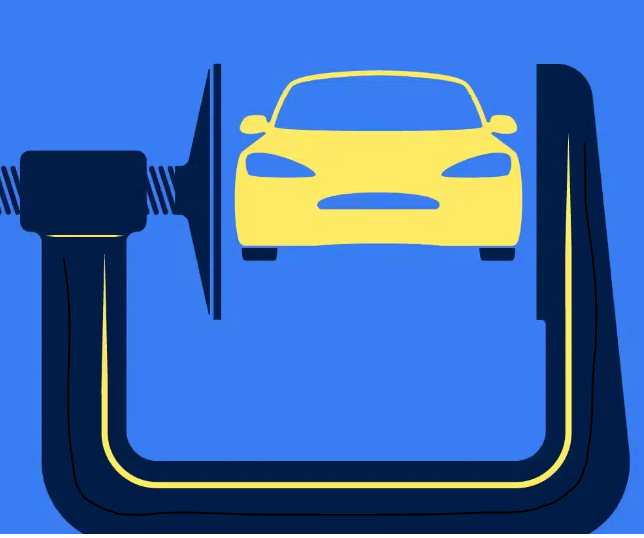When you’re in the market for a new or used car, one of the most important factors to consider is how much your car loan will cost you over time. While the price of the vehicle itself is the obvious expense, the interest rate attached to your car loan can significantly affect your overall financial picture. Interestingly, car loan interest rates can vary greatly from one lender to another, even for the same borrower. Understanding why these rates differ and how you can shop around for the best deal is crucial to ensuring you secure a loan that fits your budget and financial goals.
Understanding the Factors That Influence Car Loan Interest Rates
There are several key factors that determine the interest rate offered by lenders when you apply for a car loan. Each lender has its own approach to pricing loans, and they consider a variety of elements to determine how risky lending to you is. The more risk the lender perceives, the higher the interest rate may be.
- Credit Score: Your credit score plays a significant role in the interest rate you’re offered. Lenders use your credit score as an indicator of how likely you are to repay the loan. A higher score typically means you’re seen as less risky, and lenders will offer you lower interest rates as a result. If your credit score is low, however, you may be charged a higher rate to offset the lender’s perceived risk.
- Loan Term: The length of your loan term can also affect your interest rate. Lenders often offer lower rates for shorter loan terms because they get their money back more quickly, reducing their risk. Longer loan terms, on the other hand, tend to come with higher interest rates, as lenders are lending to you for a longer period and therefore face more risk.
- Down Payment: A larger down payment reduces the amount you need to borrow, which can lower the lender’s risk. Lenders may offer better interest rates to borrowers who can put down a significant deposit upfront because it signals financial stability and reduces the lender’s exposure.
- Type of Vehicle: New car loans generally come with lower interest rates compared to used car loans. This is because new cars are considered more valuable and less likely to lose significant value over the course of the loan. If you’re financing a used vehicle, the interest rate will likely be higher because the car has depreciated in value, which increases the lender’s risk.
Why Lenders Have Different Interest Rates
Now that you understand some of the key factors that influence interest rates, it’s important to recognize that each lender has its own way of pricing loans. This is why car loan interest rates vary so widely, even for the same borrower. Here are some of the reasons why lenders may offer different rates:
- Business Strategy and Competition: Lenders, including banks, credit unions, and online lenders, have different business models and pricing strategies. Some lenders may have a strategy of offering more competitive rates to attract a larger customer base, while others may set higher rates to maximize their profits. By comparing offers from multiple lenders, you can find the best deal for your specific situation.
- Operational Costs: Each lender has different operational costs, and these costs can influence the rates they offer. Larger banks may have higher operating expenses but can afford to offer lower rates to compete with smaller lenders. In contrast, smaller, regional lenders might have higher costs but offer more personalized service or slightly higher rates to cover those expenses.
- Risk Appetite: Lenders have different levels of risk tolerance. Some lenders may be willing to take on higher-risk borrowers and charge higher interest rates in exchange for taking on the extra risk. Others may focus on low-risk borrowers and offer more competitive rates to keep their loan portfolios stable.
- Economic Environment: Interest rates are also influenced by broader economic conditions, including inflation and the Federal Reserve’s monetary policies. While these factors affect all lenders, each institution may respond differently based on its business strategy and financial situation. For example, in times of economic uncertainty, some lenders may increase their rates to account for greater risk in the market, while others may offer more competitive rates to stimulate lending.
How to Shop Around for the Best Car Loan Interest Rate
Shopping around for the best car loan interest rate is a critical step in ensuring you get the best deal. Here are a few strategies to help you compare lenders and find the lowest interest rate possible:
- Check Your Credit Score: Before applying for a loan, check your credit score to understand where you stand. If your credit score is on the lower end, consider taking steps to improve it before applying, such as paying off outstanding debts or resolving any errors on your credit report.
- Get Pre-Approved: Many lenders offer pre-approval, which gives you an idea of the interest rate you qualify for before committing to a specific lender. Getting pre-approved can also give you more negotiating power when it comes time to finalize the loan.
- Consider Multiple Lenders: Don’t just go with the first loan offer you receive. Compare rates from various sources, including traditional banks, credit unions, and online lenders. Each lender will have its own set of criteria for offering interest rates, and by shopping around, you can identify the best deal.
- Review Loan Terms: Be sure to evaluate more than just the interest rate. Look at the loan term, fees, and any other charges that could affect the overall cost of the loan. Sometimes, a loan with a lower interest rate may come with hidden fees that make it less favorable in the long run.
- Negotiate: Once you’ve compared loan offers, don’t hesitate to negotiate. If you’ve received a better offer from one lender, use it to negotiate a lower rate with another lender. Some institutions may be willing to match or beat competitors’ rates to secure your business.
Conclusion
Car loan interest rates can vary significantly from one lender to another, even for the same borrower. Understanding the factors that influence these rates and knowing why they differ across lenders can help you make informed decisions when shopping for a car loan. By comparing offers from multiple lenders, checking your credit score, and considering the terms and conditions of the loan, you can secure the best interest rate and reduce the overall cost of financing your vehicle. Taking the time to shop around not only saves you money but also ensures that you get the loan terms that fit your financial goals.


